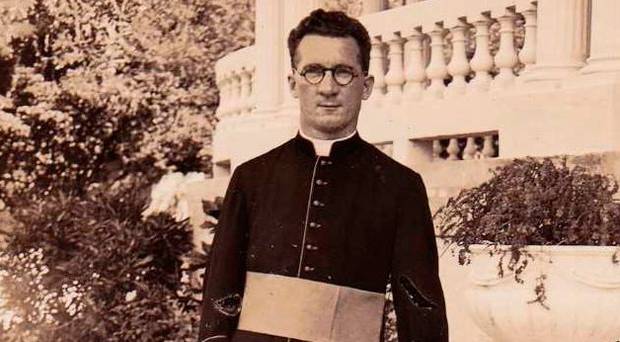The Irish Schindler’s story is one of humanity against oppression. Hugh O’Flaherty might be the most remarkable Irish cleric you’ve never heard of. Truth be told, not many people have heard his story. Not many outside of Ireland that is.
He was an Irish Roman Catholic priest, known as the Scarlet Pimpernel of the Vatican. He was great at evading traps set by the Gestapo and its sister organization. And he was responsible for saving more than 6,500 Jews and Allied troops during the war.
Who was Hugh O’Flaherty
Hugh was born on February 28, 1989. He was a young priest during World War I. But during the Second World War, he was already an established individual, one that could significantly help. He was a significant figure in the Catholic resistance to Nazism.
Son of a steward at the Killarney golf course, Hugh was fluent in Italian and German. He also held three doctorates and was an amateur golf champion. And during World War II, he was known as the Vatican Pimpernel in Nazi-occupied Rome.
He was the lead behind the Rome Escape Line, saving the lives of more than six thousand prisoners of war, partisans, and Jews. And he did all that with considerable panache from his HQ in the German College, nested right beside Saint Peter’s Basilica.
World War II Actions
In the early years of World War II, he toured prisoners of war camps in Italy and tried to find out about prisoners who had been missing in action. Once he found them alive, he tried to reassure their families through the Radio Vatican.
When Mussolini was removed from power in 1941, many prisoners of war were released. However, with Nazi occupation of Italy, they were in danger of recapture. Many of them reached Rome and asked for help, specifically from the Irish cleric. Others went to the Irish embassy.
O’Flaherty did not wait for permission from his superiors. He instantly began working on the plan. He recruited help of other priests, and two agents working for Free French. Along with his team, they concealed escapees in flats, farms, and convents. One of his first hideouts was actually behind the local SS headquarters. He coordinated all of the actions. When he was outside the Vatican, he wore various disguises. The SS learned his identity, but could not arrest him inside the Vatican. Once the German ambassador revealed this to the cleric, he began to meet his contacts on the stairs of the St. Peter’s Basilica.
Gestapo ordered a white line painted on the pavement at the opening of the St. Peter’s Square, signifying the border between Vatican and Italy. They ordered the priest to be killed the moment he crosses the line.
Others who worked in secret with Hugh hid refugees in their own private homes around Rome. When the Allied forces arrived in Rome in June 1944, 6,425 of the escapees were still alive. The Cleric asked the Allies to treat German prisoners properly as well.
Legacy Post War
After the War, he received a number of awards, including Commander of the Order of the British Empire, and the US Medal of Freedom with Silver palm. He was honored by Australia and Canada. He refused to use the lifetime pension that Italy had given to him.
He was the first Irishman named Notary of the Holy Office. After the War, he regularly visited Herbert Kappler, who was the SS chief in Rome. He visited him month after month, being his only visitor. In 1959, Kappler converted to Catholicism and was baptized by O’Flaherty.
The movie The Scarlet and the Black is based on the story of Hugh O’Flaherty. It is based on the J.P. Gallagher Book, “The Scarlet Pimpernel of the Vatican”, published in 1967.



